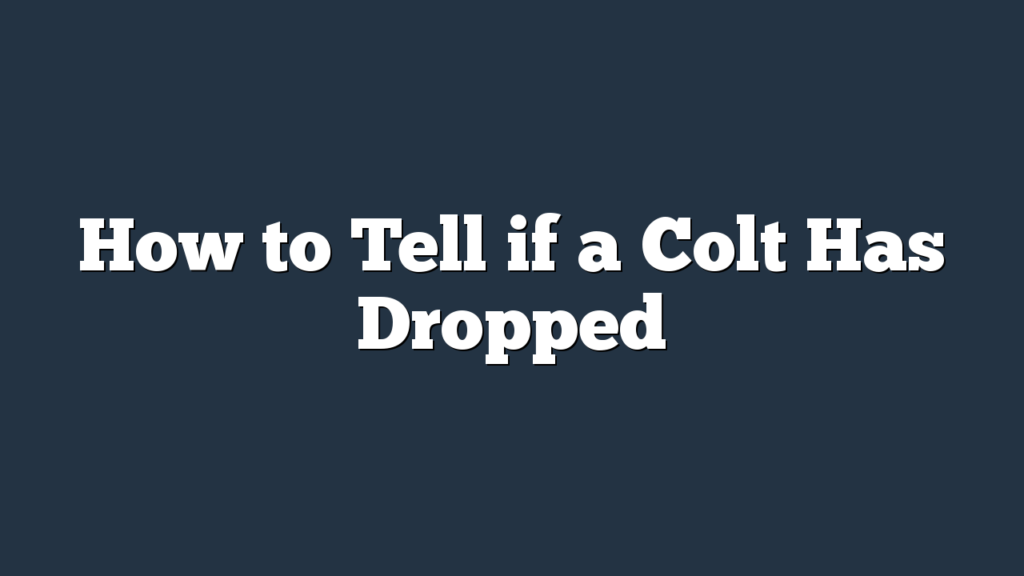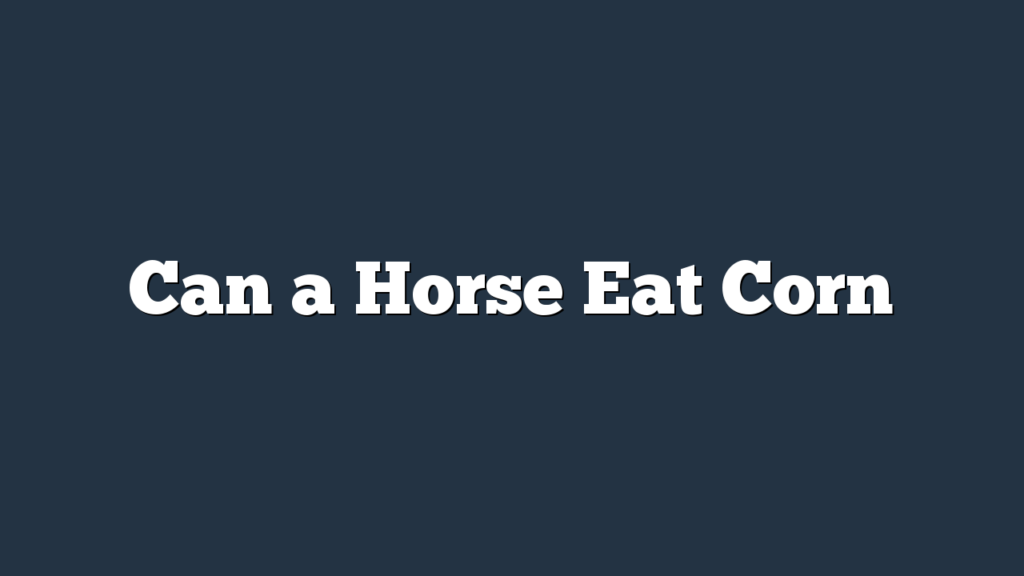Are you curious to know if your colt has dropped? Wondering how to tell? Look no further! In this article, we’ll guide you through the physical changes to look out for, the behavioral differences to observe, and the role of age in determining if your colt has dropped.
By understanding these signs and consulting with a veterinarian, you’ll be able to confidently determine if your colt has dropped and take the necessary steps for their care and management.
Physical Changes in a Colt’s Genital Area
To determine if a colt has dropped, observe the presence of noticeable physical changes in its genital area. Genital development is an important indicator of puberty in colts. As a colt reaches sexual maturity, you may notice that its scrotum becomes more prominent and hangs lower. This is due to the descending of the testicles into the scrotum, a process known as testicular descent. The scrotum may also become fuller and more developed, indicating the maturation of the reproductive organs.
Another physical change to look for is the enlargement of the penis. During puberty, the penis of a colt will increase in size and become more erect. This is a natural response to the hormonal changes occurring in the body. It’s important to note that these changes may not happen all at once but rather gradually over time.
In addition to these physical changes, you may also observe behavioral changes in a colt that has dropped. It may become more interested in mares, display more aggressive behavior towards other colts, and start exhibiting mating behaviors.
Differences in Colt’s Behavior
You can frequently observe differences in a colt’s behavior once it has dropped. As the testicles descend into the scrotum, the colt may display various behavioral changes. One common change is increased playfulness and energy. The colt may become more active and engage in frequent bouts of running, bucking, and kicking. This newfound energy is often a result of the surge in testosterone that accompanies the dropping process.
However, it’s important to note that not all behavioral changes are positive. Some colts may exhibit signs of discomfort or pain during the dropping process. They may become irritable, restless, or exhibit unusual behaviors such as biting or kicking. This could be due to the physical discomfort they experience as their testicles move into their proper position. It’s essential to monitor the colt closely during this time and consult a veterinarian if any signs of distress persist.
In addition to these behavioral changes, colts may also display increased interest in mares. Once the testicles drop, they become capable of reproduction, and their natural instinct to breed may become more pronounced. They may show heightened curiosity towards mares, vocalize more frequently, and attempt to mount them. It’s crucial to provide appropriate guidance and training to manage this behavior to prevent any unwanted breeding or potential accidents.
Age as a Determining Factor
Determining the age when a colt has dropped can be done through physical examination and observation. By carefully assessing the physical development of the colt, you can get a good idea of when it has reached the appropriate age. Here are three key indicators to look for:
- Teeth development: A colt’s teeth provide valuable insight into its age. As the colt grows, its baby teeth will be replaced by permanent ones. By examining the eruption and wear patterns of these teeth, you can estimate the age with reasonable accuracy.
- Skeletal growth: The growth plates in a colt’s legs close at specific ages, indicating its maturity. By assessing the fusion of these growth plates, you can determine if the colt has reached a certain stage of development.
- Muscle tone and body shape: As a colt ages, it undergoes physical changes that are visible in its muscle tone and body shape. By observing the development of these features, such as a more defined musculature and a more rounded hind end, you can gauge the colt’s age.
Observing the Scrotum for Signs of Dropping
Look for changes in the size and position of the scrotum as indicators that a colt has dropped. The scrotum is the sac that contains the testicles, and its development is a crucial sign of a colt’s maturity.
As the colt grows, the scrotum will undergo changes that can be easily observed. One of the first signs of dropping is an increase in size. The scrotum will become larger and more pronounced as the testicles descend into it. You may notice that the scrotum appears fuller and hangs lower than before.
Another important sign to look for is the position of the scrotum. In young colts, the scrotum is usually located closer to the body, near the belly. However, as the testicles drop, the scrotum will move further down towards the hind legs. So, if you observe the scrotum hanging lower and closer to the hind legs, it’s a clear sign that the colt has dropped.
These signs of scrotal development are reliable indicators that a colt is progressing towards sexual maturity. By paying attention to these changes, you can accurately determine if a colt has dropped or not.
Understanding the Role of Hormones
To understand the role of hormones in determining if a colt has dropped, it’s important to be aware of the physiological changes that occur within their body. The endocrine system plays a crucial role in regulating these hormonal changes in colts. Here are three key points to help you understand the role of hormones in this process:
- Testosterone Production: As a colt matures, the pituitary gland in their brain sends signals to the testes to produce testosterone. This hormone is responsible for the development of secondary sexual characteristics, including the dropping of the testicles.
- Growth Hormone: The pituitary gland also releases growth hormone, which stimulates the growth and development of the colt’s body. This hormone aids in the overall growth of the colt, including the development of the testicles.
- Timing of Hormonal Changes: The hormonal changes that lead to the dropping of the testicles in colts typically occur between the ages of 6 months to 2 years. This period is known as puberty, and it’s when the colt goes through various physical and behavioral changes.
Consulting a Veterinarian for Confirmation
To confirm whether or not a colt has dropped, it’s crucial that you seek the expertise of a veterinarian.
A professional opinion is required to accurately determine if the testicles have descended.
Consulting a veterinarian will provide the necessary confirmation needed for this important matter.
Expert Opinion Required
To confirm if a colt has dropped, you should consult a veterinarian for their expert opinion. A veterinarian is trained to assess the hormonal changes and conduct a physical examination to determine if a colt has indeed dropped. Here are three reasons why consulting a veterinarian is essential:
- Knowledge and Experience: Veterinarians have extensive knowledge and experience in equine anatomy and physiology. They can accurately identify the signs of a dropped colt and distinguish them from other conditions.
- Specialized Equipment: Veterinarians have access to specialized equipment, such as ultrasound machines, which can provide a clear visual confirmation of a dropped colt.
- Professional Diagnosis: Consulting a veterinarian ensures that you receive a professional diagnosis. They can provide guidance on the appropriate course of action, whether it be further monitoring or taking steps to address any potential issues.
Professional Confirmation Needed
To confirm if a colt has dropped, you should consult a veterinarian for their expert opinion. While there are certain signs of maturity in colts that you can look for, understanding a colt’s development can be complex and it’s best to rely on the knowledge and experience of a professional. A veterinarian will be able to provide a thorough examination and accurately determine if the colt has indeed dropped. This is important because the dropping of the colt’s testicles is a significant milestone in their development and can indicate their readiness for certain activities like breeding or training. By consulting a veterinarian, you can ensure that you have a clear understanding of your colt’s progress and make informed decisions for their care and future.
| Signs of Maturity in Colts |
|---|
| Stronger and more defined muscles |
| Prominent withers |
| Height growth has slowed down |
| Calmer and more focused demeanor |
Potential Complications and Health Concerns
If you notice any signs of potential complications or health concerns in your colt, it’s important to seek veterinary assistance immediately. Taking prompt action can help prevent further complications and ensure the well-being of your young horse.
Here are some potential complications and health concerns to be aware of:
- Inguinal hernia: This occurs when a loop of intestine protrudes through the inguinal ring in the abdominal wall. It can cause pain, swelling, and difficulty in defecation. Immediate veterinary attention is necessary to prevent strangulation of the intestine.
- Umbilical infection: An infected umbilical stump can lead to a serious condition known as omphalitis. Look out for signs of redness, swelling, discharge, or foul odor around the umbilicus. Prompt treatment with antibiotics is crucial to prevent the infection from spreading.
- Retained testicle: If one or both testicles don’t descend into the scrotum by a certain age, it can lead to complications such as testicular torsion or cancer. It’s important to have a veterinarian evaluate the situation and determine if surgical intervention is necessary.
Implications for Future Breeding Potential
You should consider the implications for future breeding potential when determining if a colt has dropped. Breeding readiness is an important factor to consider when deciding whether a colt is suitable for future breeding. A dropped colt indicates that the testicles have descended into the scrotum, which is a crucial milestone in their reproductive development. This signifies that the colt has reached sexual maturity and is capable of producing offspring.
Assessing the dropped status of a colt is essential for genetic selection in breeding programs. Breeders aim to produce top-quality offspring with desirable traits, and ensuring that the colt has dropped is a crucial step in achieving this goal. By selecting colts with descended testicles, breeders can improve the chances of producing offspring with good conformation, temperament, and athletic ability.
However, it’s important to note that the dropped status alone doesn’t guarantee successful breeding. Other factors such as semen quality, fertility, and overall health should also be considered. Regular veterinary examinations are necessary to assess the colt’s reproductive health and confirm its suitability for breeding.
Proper Care and Management for Colts That Have Dropped
Taking proper care and managing a colt that has dropped is essential for its overall health and development. Here are three key aspects to consider when caring for and managing a colt that has dropped.
- Care and Nutrition:
- Provide a balanced diet: Ensure that the colt receives a nutritionally balanced diet that includes high-quality forage, grains, and supplements as needed. Consult with a veterinarian or equine nutritionist to determine the specific dietary requirements for your colt.
- Regular deworming: Establish a deworming schedule to prevent internal parasites from affecting the colt’s health. Follow your veterinarian’s recommendations for deworming products and frequency.
- Monitor growth and weight: Regularly measure and record the colt’s height, weight, and body condition to ensure proper growth and development. Adjust the diet accordingly to maintain a healthy weight.
- Training:
- Gentle handling: Begin handling the colt at a young age to establish trust and develop good manners. Use positive reinforcement techniques to encourage desired behaviors and gradually introduce more advanced training as the colt matures.
- Groundwork exercises: Teach the colt basic groundwork exercises such as leading, tying, and standing quietly. These exercises help establish respect, obedience, and good manners.
- Gradual desensitization: Expose the colt to various stimuli, such as different environments, objects, and sounds, in a controlled and gradual manner. This will help the colt become more confident and adaptable.
- Socialization:
- Turnout with compatible companions: Allow the colt to interact with other horses of similar age or temperament in a safe and supervised environment. Socialization with peers promotes healthy development and teaches important social skills.
- Controlled exposure to new experiences: Introduce the colt to different situations, such as trail rides or clinics, to expose it to new environments and build confidence. Gradually increase the level of challenge as the colt becomes more comfortable.
Frequently Asked Questions
How Long Does It Typically Take for a Colt’s Testicles to Drop?
On average, it takes a certain amount of time for a colt’s testicles to drop. Look for signs like swelling or a visible scrotum. Remember, the average age for this to happen is important.
Can a Colt’s Testicles Drop at Different Times or Stages?
Can a colt’s testicles drop at different times or stages? Yes, the timing of a colt’s testicle drop can vary among individuals. It’s important to monitor and consult a veterinarian to ensure proper development.
Are There Any Non-Physical Signs That Can Indicate a Colt Has Dropped?
If a colt has dropped, signs may include increased interest in mares, mounting behavior, and vocalization. Behavioral changes like increased confidence and assertiveness can also indicate that a colt has dropped.
Can a Colt’s Testicles Drop and Then Retract Later On?
Sometimes, colts’ testicles can drop and then retract later on due to factors like temperature and excitement. It’s important to monitor them closely to determine if they have dropped or not.
Are There Any Specific Exercises or Activities That Can Encourage a Colt’s Testicles to Drop?
Exercises and hormonal factors can influence a colt’s testicles to drop. Engaging in physical activities and promoting a healthy hormonal balance may encourage the descent of the testicles, ensuring proper development and reproductive function.
Conclusion
So, in conclusion, determining whether a colt has dropped involves observing physical changes in their genital area, differences in their behavior, and considering their age. It’s important to understand the role of hormones and consult a veterinarian for confirmation.
Potential complications and health concerns should be taken into consideration, as well as the implications for future breeding potential. Proper care and management are necessary for colts that have dropped.



